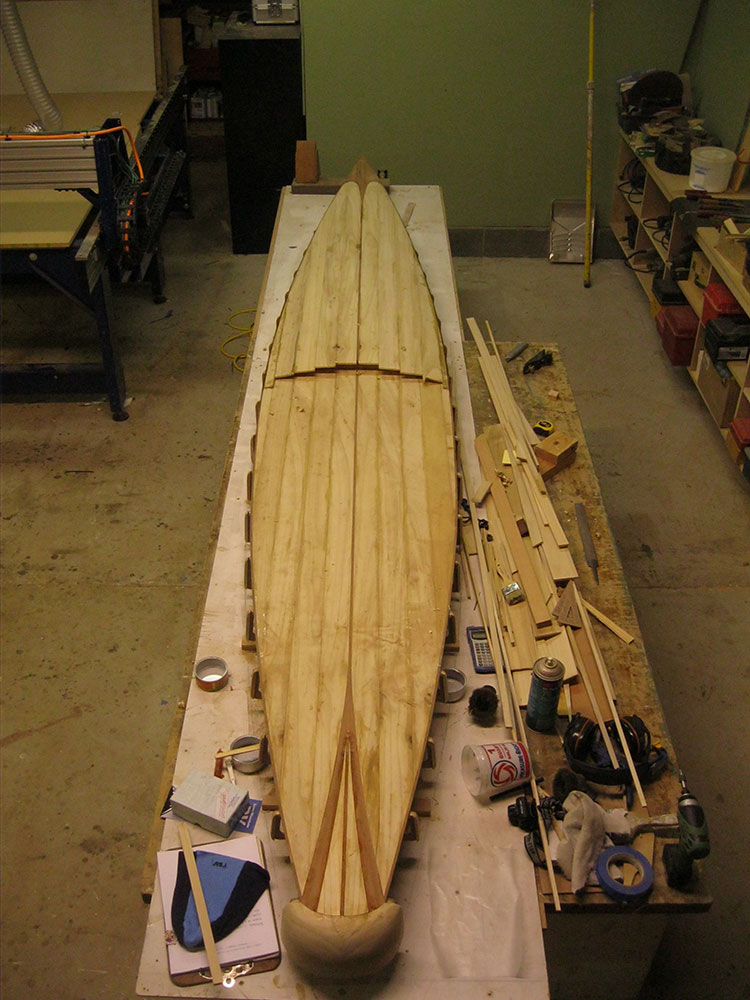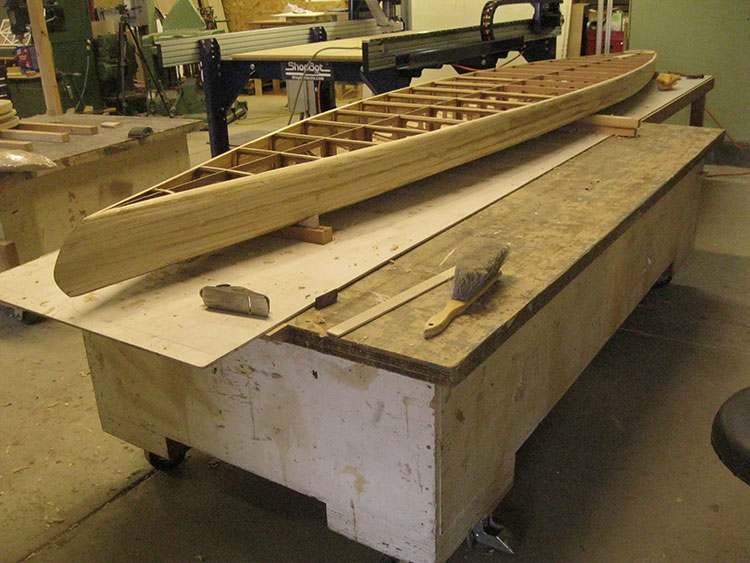Flipping the Board
Tutorial: Flipping the Board
Preparing to flip the board
The board can be flipped over after the deck and several rail strips on each side have been installed. The board will be stiff enough to maintain its rocker profile at this point. The photo below shows the rocker tabs (board shown without strips for clarity) which extend from the bottom of the frame to the flat assembly table.
Releasing rocker tabs
To release the board from the assembly table and get it ready to flip, reach under the board with a pull saw and cut the rocker tabs loose, or, if clamps were used to attach the rocker tabs to the assembly blocks, the clamps can be removed. The board in the photo below, with the addition of several rail strips on each side, is ready to be flipped over.
Flip and stabilize board
When the board has been released from the assembly table it is flipped over and secured to temporary blocking. A small patch of wood glue can be used to make this temporary attachment.
Stabilized and tabs removed
The board in this image has been flipped, secured to the assembly table the rocker tabs have been cut and blocked planed flush with the bottom. The supplemental gluing strips were added after the rocker tabs were block planed flush.
For more on flipping the board check out this:




